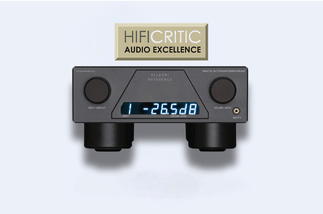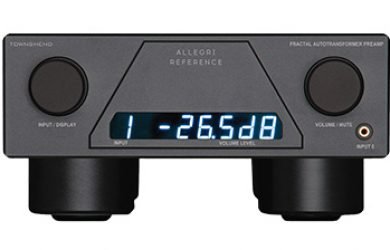If you’re an audiophile chasing the purest sound possible, speaker isolation is a topic you can’t ignore. A recent YouTube video titled “Live Test – Speaker Decoupling – Coupling: IsoAcoustics – Townshend – Primacoustic” dives into this critical aspect of hi-fi audio, offering a fascinating comparison of three isolation solutions. The test highlights how different isolation methods affect sound quality, with a particularly intriguing observation about the Townshend Podium’s impact on bass response. Let’s break it down and explore why this matters for your listening experience.
The Video: A Live Test of Speaker Isolation
In the video, a panel of listeners evaluates the performance of three speaker isolation systems: IsoAcoustics, Townshend, and Primacoustic. These products aim to decouple or couple speakers from their environment, minimizing unwanted vibrations that can colour the sound. The test setup allows the panel to hear real-time differences as the speakers are placed on each isolation platform, providing a rare glimpse into how these products shape the audio output.
The standout moment comes when the panel reacts to the Townshend Podium. One listener notes a perceived “lack of kick bass” compared to other setups. This observation sparks a deeper discussion about what we’re actually hearing when speakers are inadequately isolated. The video suggests that the “kick bass” some listeners crave isn’t part of the original music but an artificial effect caused by speakers moving and vibrating without proper isolation. This revelation is a game-changer for anyone seeking true-to-source audio.
Why Isolation Matters
Speakers are sensitive creatures. When they’re placed on a surface like a floor or stand, their vibrations can interact with that surface, creating secondary resonances that muddy the sound. These vibrations can exaggerate bass frequencies, smear instrument separation, and add a layer of artificiality to the music. Isolation systems like those tested in the video aim to mitigate this by either decoupling the speaker (isolating it from the surface) or coupling it (firmly connecting it to dissipate energy).
The Townshend Podium, in particular, uses a sophisticated spring-based system to isolate speakers, allowing them to float freely and reduce vibrational interference. The panel’s observation about the “missing” kick bass suggests that the Podium is doing its job exceptionally well—removing the artificial bass bloom that comes from uncontrolled speaker movement. What you’re left with is the music as it was intended: clean, natural, and uncoloured.
The Bass Conundrum: Artificial vs. Natural
For many listeners, bass is the heart of a hi-fi system. But the video raises an important question: is the bass you’re hearing part of the recording, or is it an artifact of your setup? When speakers move due to poor isolation, they can create a boomy, exaggerated bass response that feels powerful but isn’t accurate. The Townshend Podium’s ability to tame this effect might initially seem like a loss of bass, but it’s actually revealing the true sound of the recording.
If you find your system lacks bass after upgrading to a high-quality isolation solution, don’t panic. The video offers a practical tip: try pushing your speakers closer to the wall. This adjustment can reinforce low frequencies by leveraging boundary effects, compensating for the loss of artificial bass. It may take some experimentation to find the sweet spot, but once you do, you’ll unlock a lifetime of clear, natural sound with exceptional instrument separation.
Key Takeaways for Audiophiles
The live test video is a must-watch for anyone serious about hi-fi audio. Here are the main lessons:
- Isolation is Critical for Pure Sound: Products like IsoAcoustics, Townshend, and Primacoustic can dramatically improve clarity by reducing vibrational interference.
- Beware of Artificial Bass: The “kick bass” you love might be a distortion caused by poor isolation. True bass is tight, controlled, and faithful to the recording.
- Experiment with Speaker Placement: If your system sounds lean after adding isolation, tweak the speaker position—closer to the wall can restore bass without sacrificing clarity.
- Trust Your Ears, But Understand the Science: The Townshend Podium’s effect on bass highlights how our perceptions can be shaped by setup flaws. Proper isolation lets you hear the music, not the system.
Final Thoughts
The Live Test – Speaker Decoupling – Coupling video is a compelling reminder that great audio is about removing barriers between you and the music. The Townshend Podium’s ability to strip away artificial bass bloom is a testament to the power of effective isolation. While it might require some tweaking to dial in your system, the reward is a soundstage that’s natural, detailed, and immersive.
If you’re ready to hear your music as it was meant to be heard, consider investing in a quality isolation solution and take the time to fine-tune your setup. Push those speakers back, play around with placement, and prepare to rediscover your favorite tracks with newfound clarity. For the full experience, check out the video on YouTube and hear the difference for yourself.
What’s your experience with speaker isolation? Have you tried IsoAcoustics, Townshend, or Primacoustic? Share your thoughts in the comments below!



















